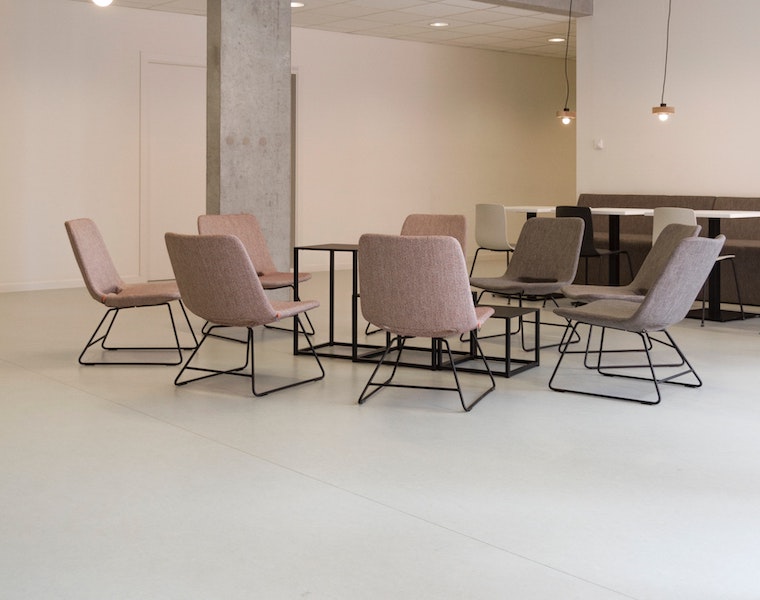They say the kitchen is the heart of the home – but what about the office? We’re firm believers that the office kitchen holds a great deal of power and potential when it comes to fostering a happy, engaged and motivated workforce. In this blog post, we explore why kitchens should never be an afterthought in any workplace fit out or design scheme.
Taken at face value, an office kitchen is a place to go to store food, grab a coffee and stay hydrated throughout the day. It’s where workers can convene at various points to take a quick snack break or sit down together for lunch. Naturally, footfall through an office kitchen peaks during the hours of 12pm-2pm – but what about the rest of the day?
Here, we explore how you can get more out of your workplace kitchen and why, when expertly designed, this space adds far more value than it has historically been given credit for.
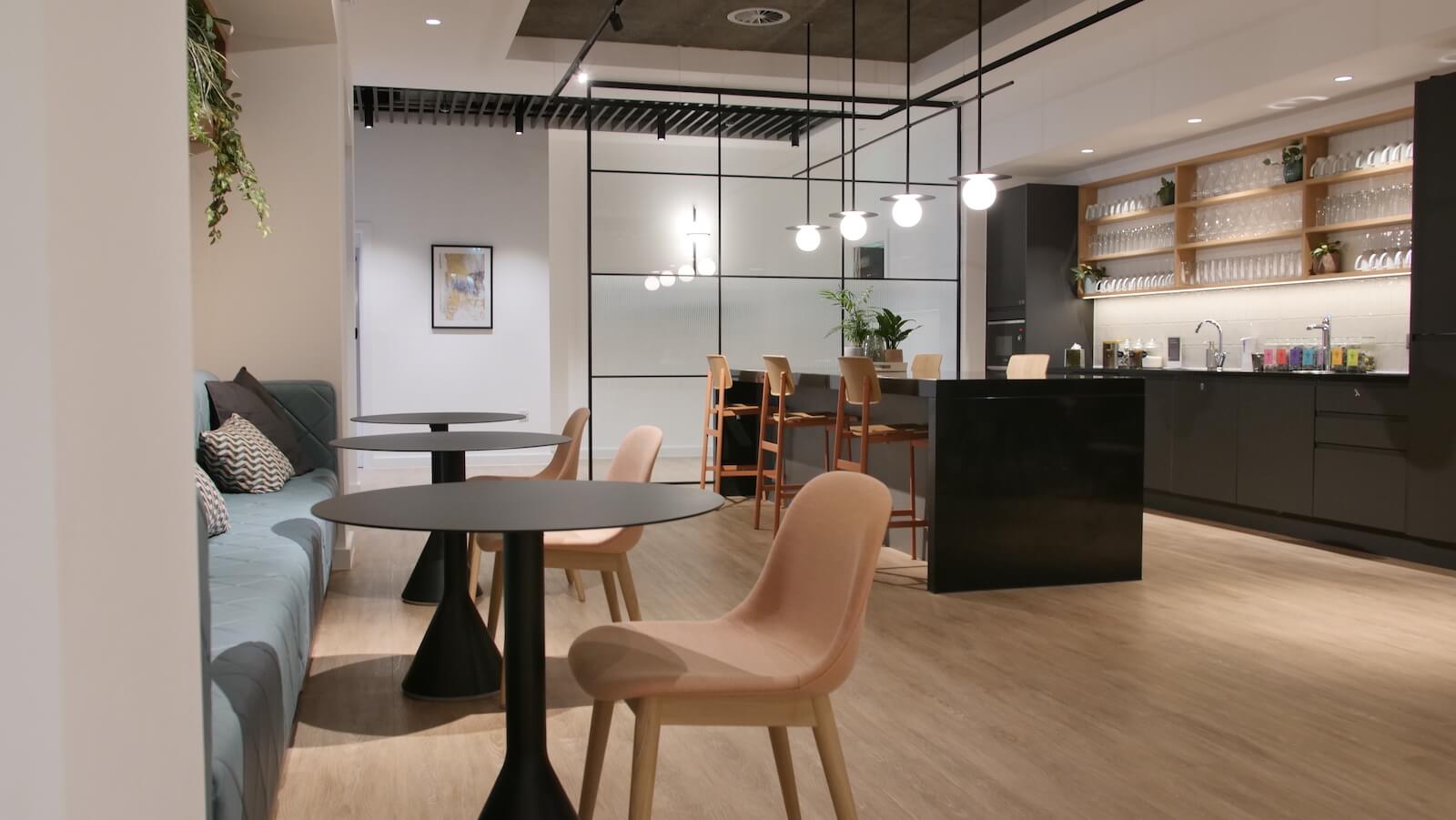
Social capital
We’ve spoken before about the importance of social capital – “the networks of relationships among people who live and work in a particular society, enabling that society to function effectively”. In a workplace setting, this translates to the relationships between teams and employees, and how this impacts the overall workforce dynamic.
In our blog post on the topic, we explain that social capital is: “idea-sharing, spontaneous interactions, professional relationships, personal friendships, casual conversations, serious discussions, differences of opinions, shared outlooks, etc”. Not all of this can be fostered and nurtured at the desk or during a meeting, for example.
An office kitchen acts as the perfect breeding ground for many types of social capital, facilitating conversations and exchanges that build the foundations for great relationships. In this more agile age of work, the kitchen is also the perfect place to capitalise on watercooler-style interactions – often the place where some of the greatest ideas are born.

Impromptu collaboration
The wonderful thing about human beings is that we’re all unique. That means we all work in different ways and that how each of us fulfils our potential is extremely nuanced. It has been widely accepted for a while now that people need more choice and control if they’re going to perform their best – one person might function more highly in a super tech-integrated space, while another might flourish in a more analogue, breakout environment.
For this reason and due to the diversity of how people prefer to work, the office kitchen should never be overlooked as an additional work setting. Not for lengthy meetings or scheduled teamwork, of course, but rather for spontaneous idea-sharing and impromptu collaboration.
In our own Manchester showroom, for example, our kitchen features a table tennis table that our staff regularly use when they need to decompress or take a break. Often though, this leads to random conversations about projects that transpire to be productive and can then be fleshed out later on in a more formal capacity.
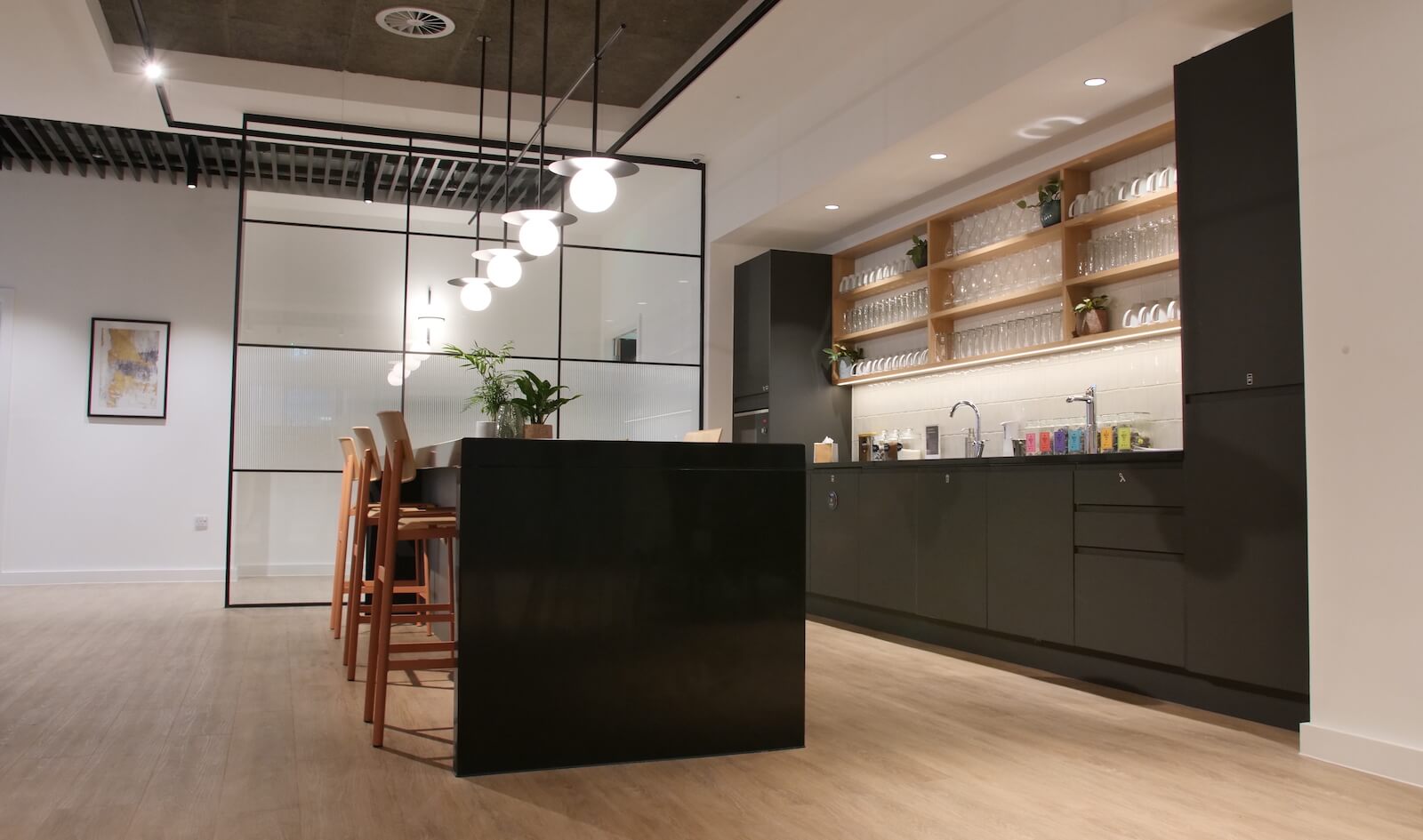
Touchdown workspaces
This point is closely related to the idea of facilitating more impromptu collaboration and spontaneous idea-sharing but hones more on the physical aspect of doing so. If employees are going to be able to have these kinds of off-the-cuff exchanges, they need the right environment and a physical space which supports these modes of work.
As the name suggests, touchdown spaces provide areas where employees can touchdown for a very brief period of time. This might be somebody on their own who has had an idea on the move or remembered they need to complete a quick task. Or it could be a pair – or even a small group – of employees who hadn’t planned to discuss an idea but have crossed paths in the workspace and need somewhere to prop a laptop or take a quick seat.
An office kitchen is an ideal environment for these touchdown exchanges as people are often passing through the space from A to B. Two teammates might want to ask each other a few questions whilst the kettle boils, for example. That said, this won’t apply to all workplace kitchen environments. It’s really all just about ascertaining what works for you and your employees.
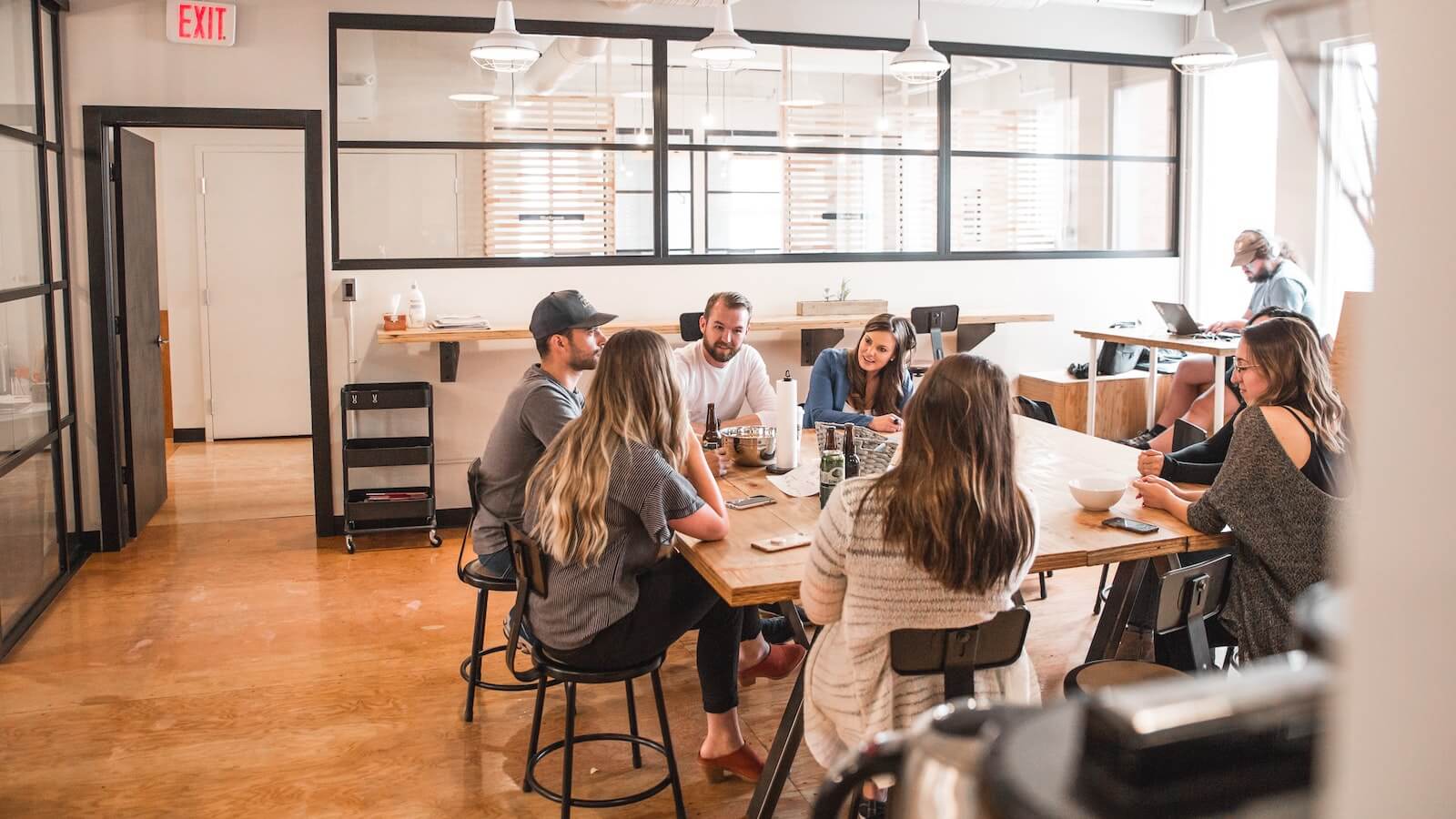
Community and belonging
You don’t need us to tell you that fostering a sense of community and belonging is vital for a happy, motivated and dedicated workforce. What you might not have realised, however, is how instrumental a role a thoughtfully-designed office kitchen can play in cultivating that kind of company culture.
As people move more fluidly around the workplace, adopt blended working and take advantage of more remote working opportunities, it isn’t quite so easy to connect from the comfort of your own desk.
The office kitchen provides a communal space where staff can come together to interact casually and connect with colleagues from other parts of the business in a completely neutral environment. This means they can then develop stronger social bonds, which then fortify and support professional working relationships too. Naturally, this links closely back to the concept of social capital.
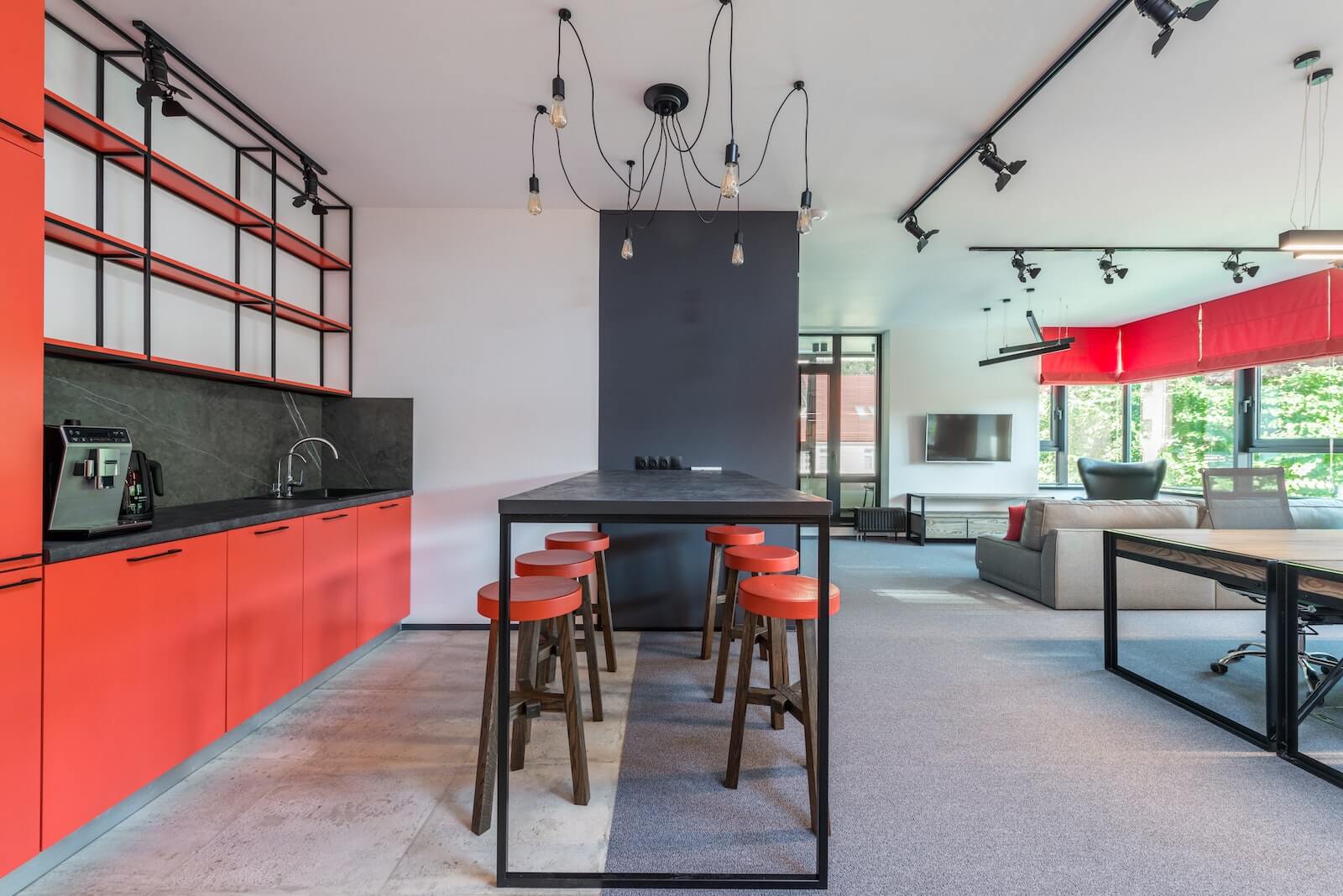
General hygiene and cleanliness
In terms of how to utilise the various settings that make up the wider workspace, it goes without saying that an office kitchen is where food and drink should be contained. This has always been the case, even when dedicated desks and tethered seating were more commonplace.
However, as the workforce becomes more agile and nomadic on account of increased hybrid working and the rise of activity-based environments, this is more important than ever. Now that ownership over a workspace is less autonomous, as employees move more freely around the space, taking a more spontaneous approach to where they work, hygiene and cleanliness is crucial.
This is all wrings particularly true in a post-pandemic world, where we’ve now learned our lesson about the spread of things like viruses and bacteria around the workplace. Using the kitchen as a basecamp for the consumption of food and drink will help keep the main workspace clean, tidy and as germ-free as possible.

Employee wellbeing
Social capital, spaces to collaborate, choice and control around how they work, a sense of belonging and a clean, hygienic place to work are all positive workplace attributes. All of these things combined contribute to a positive and healthy employee experience that is considerate of overall wellbeing.
Of course, we’re not saying that all of this can be achieved or maintained simply through office kitchen design. What we are saying, though, is that as part of the wider ecosystem of spaces, a well-designed kitchen can also become the heart of the workplace – not just the home.



